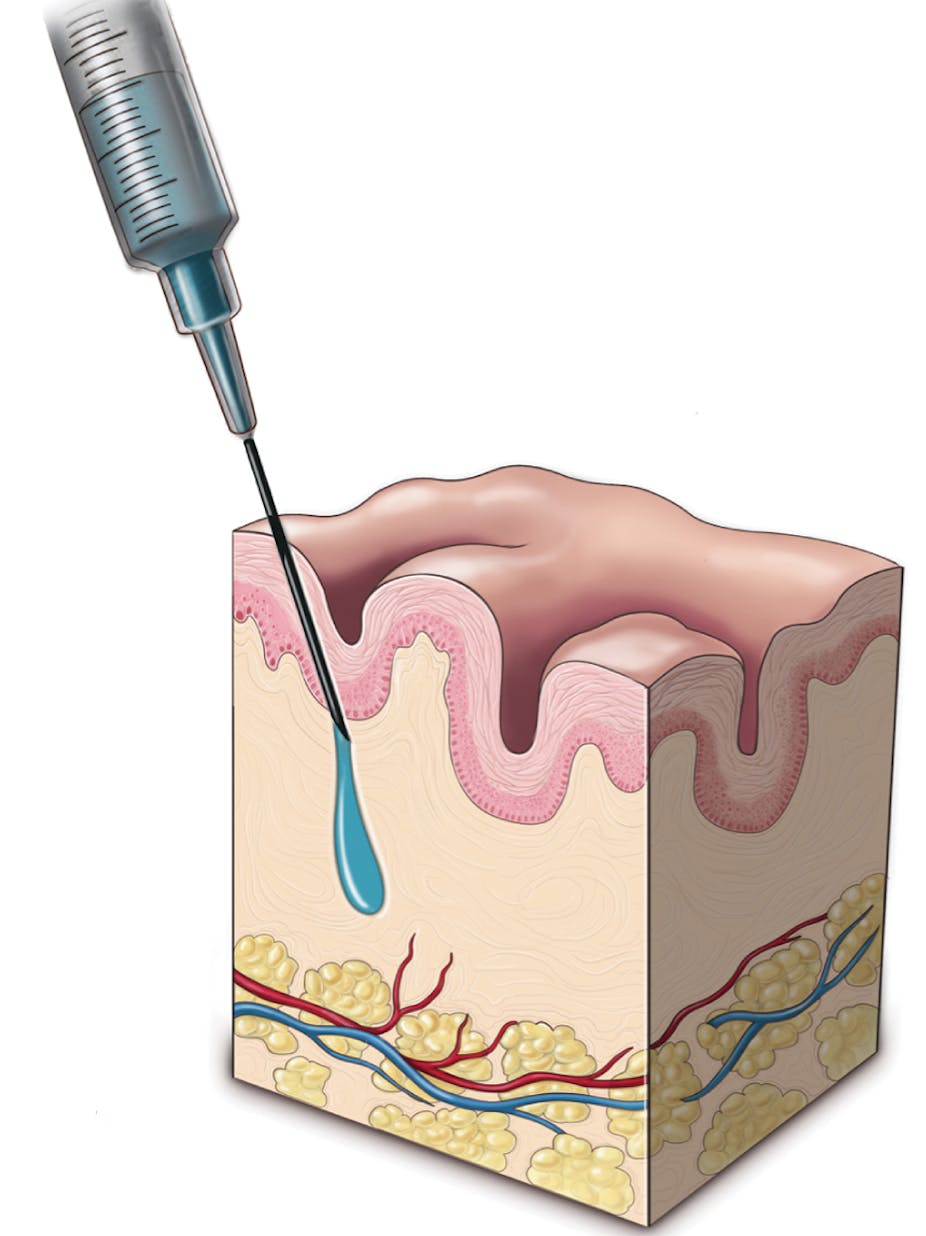
Scientists have invented a new pliable implant that can be injected in liquid form, massaged into shape and hardened up through exposure to light.
Fillers are used to make patients look younger, reconstruct faces after car accidents or help repair congenital defects. However, existing fillers can cause infection, be rejected by the body, don’t always look realistic, or may produce only temporary results.
Led by researchers at the Johns Hopkins University in Baltimore, the scientists developed a new liquid filler made from a mix of a naturally occurring substance called hyaluronic acid and a synthetic compound called polyethylene glycol.
Injecting it in liquid form would allow a surgeon to mould it into shape. It is then “firmed up” through exposure to light emitting diodes.
Allowing it to be moulded after injection allows a surgeon to fit the implant better to the patient’s shape, said lead researcher Jennifer Elisseeff, a biomedical engineer at Johns Hopkins University.
“By tuning the properties for the material, we can match the surrounding mechanical properties, whether you’re in more of a fatty area, a muscle area or a skin area,” Elisseeff was quoted as saying on the Nature news website.
In rats, the filler held its shape and size for 491 days – much longer than a natural hyaluronic acid implant used as a control.
In a trial on humans, where the polymer was used on people getting abdominoplasty surgery, the implants held their shape for 12 weeks, long after control injections of natural hyaluronic acid went soft.
The researchers noted, however, that the implant caused inflammation in humans.
The research team’s paper was published in the journal Science Translational Medicine.
Associate Professor Anand Deva, head of Cosmetic Plastic and Reconstructive Surgery at Macquarie University, said the idea of a light-sensitive filler was interesting but further research was needed.
“The data is really only in trials on animals – the human stuff is still early. This product would still need to be tested so it would be a few years before we see it on the shelves, if ever,” said Dr Deva, who was not involved in the research.
“All sorts of artificial materials have been used in the past as filler, including paraffin, ground-up coral and silicon. But the search for the perfect filler goes on,” he said.
“Some are saying why are we looking at artificial fillers when the ideal filler is right there in the body of the patient in the form of fat cells,” he said.
“But of course, it would be nice to have a product you can use off the shelf without having to subject the patient to harvesting of fat cells.”

